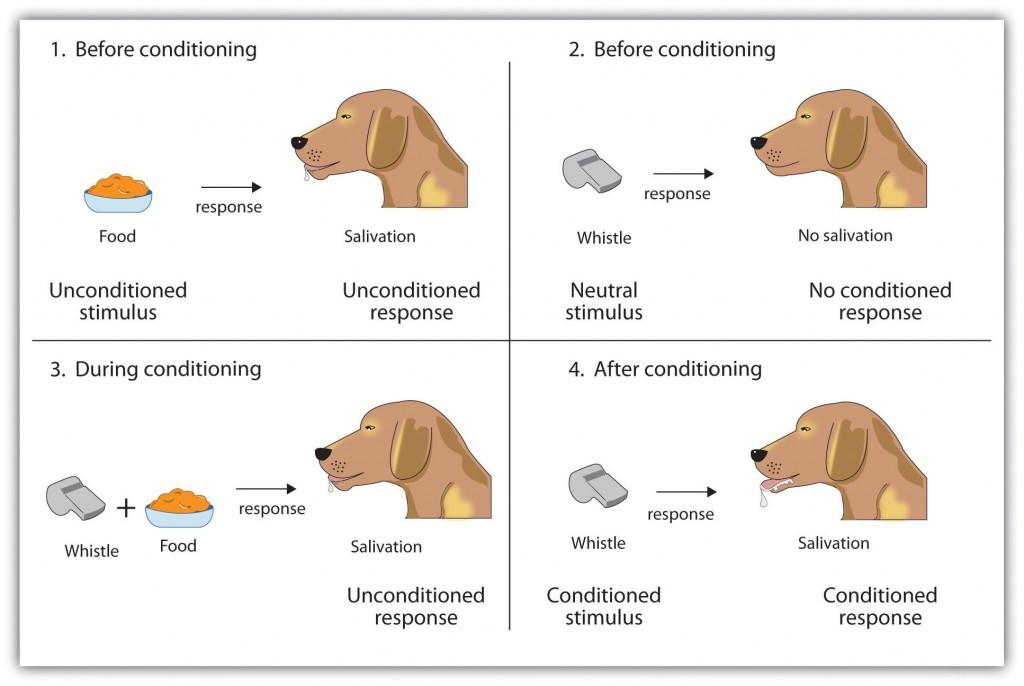Classical conditioning, a fundamental learning process, hinges on the learned association between two stimuli. This concept, pioneered by Ivan Pavlov, explains how a neutral stimulus can elicit a response after being repeatedly paired with a stimulus that naturally evokes that response. This article delves into the intricacies of classical conditioning, exploring its core principles, influential factors, and real-world applications.
Understanding Pavlov’s Groundbreaking Experiments
Ivan Pavlov’s initial observations of salivating dogs in anticipation of food paved the way for understanding classical conditioning. His experiments involved pairing a neutral stimulus, such as a tone, with an unconditioned stimulus (US), like food, which naturally triggers an unconditioned response (UR) of salivation. Through repeated pairings, the tone transformed into a conditioned stimulus (CS), eliciting a conditioned response (CR) of salivation even in the absence of food.
Key Components of Classical Conditioning
- Unconditioned Stimulus (US): A stimulus that naturally and automatically triggers a response without prior learning. In Pavlov’s experiment, food was the US.
- Unconditioned Response (UR): The unlearned, naturally occurring response to the unconditioned stimulus. Salivation in response to food is the UR.
- Conditioned Stimulus (CS): Initially a neutral stimulus that, after repeated association with the US, elicits a conditioned response. The tone became the CS in Pavlov’s experiments.
- Conditioned Response (CR): The learned response to a previously neutral stimulus (now the CS). The dog’s salivation in response to the tone is the CR.
 alt text: A diagram illustrating the four panels of classical conditioning with a dog and a whistle.
alt text: A diagram illustrating the four panels of classical conditioning with a dog and a whistle.
Extinction, Generalization, and Discrimination
Classical conditioning is not static. The learned association can be weakened or even disappear through extinction, which occurs when the CS is presented repeatedly without the US. However, spontaneous recovery, the reappearance of the CR after a pause in extinction trials, demonstrates that the association is not entirely forgotten.
Generalization occurs when stimuli similar to the CS also elicit the CR. Conversely, discrimination involves learning to differentiate between the CS and other similar stimuli that do not predict the US. These processes refine the learned association, enabling organisms to respond selectively to their environment.
Higher-Order Conditioning and Biological Preparedness
Second-order conditioning extends the principles of classical conditioning by pairing a new neutral stimulus with an established CS. This demonstrates that learned associations can build upon one another, creating complex chains of learning.
Furthermore, biological preparedness suggests that certain associations are more readily learned due to their evolutionary significance. For instance, organisms are predisposed to learn associations between taste and nausea, facilitating the avoidance of potentially harmful foods. This underscores the interplay between nature and nurture in shaping learned behaviors.
Classical Conditioning in Action: Phobias and PTSD
The principles of classical conditioning are instrumental in understanding and treating various psychological conditions. Phobias, irrational fears of specific objects or situations, can arise from learned associations between neutral stimuli and traumatic experiences. Similarly, post-traumatic stress disorder (PTSD) involves the development of strong conditioned responses to stimuli associated with a traumatic event. A Learned Association Between Two Stimuli Is Central To the development and persistence of these disorders.
Conclusion
A learned association between two stimuli is the cornerstone of classical conditioning. From Pavlov’s seminal work to modern applications in understanding and treating psychological disorders, the principles of classical conditioning remain crucial in explaining how organisms learn and adapt to their environment. This fundamental learning process highlights the powerful influence of associative learning on behavior.

